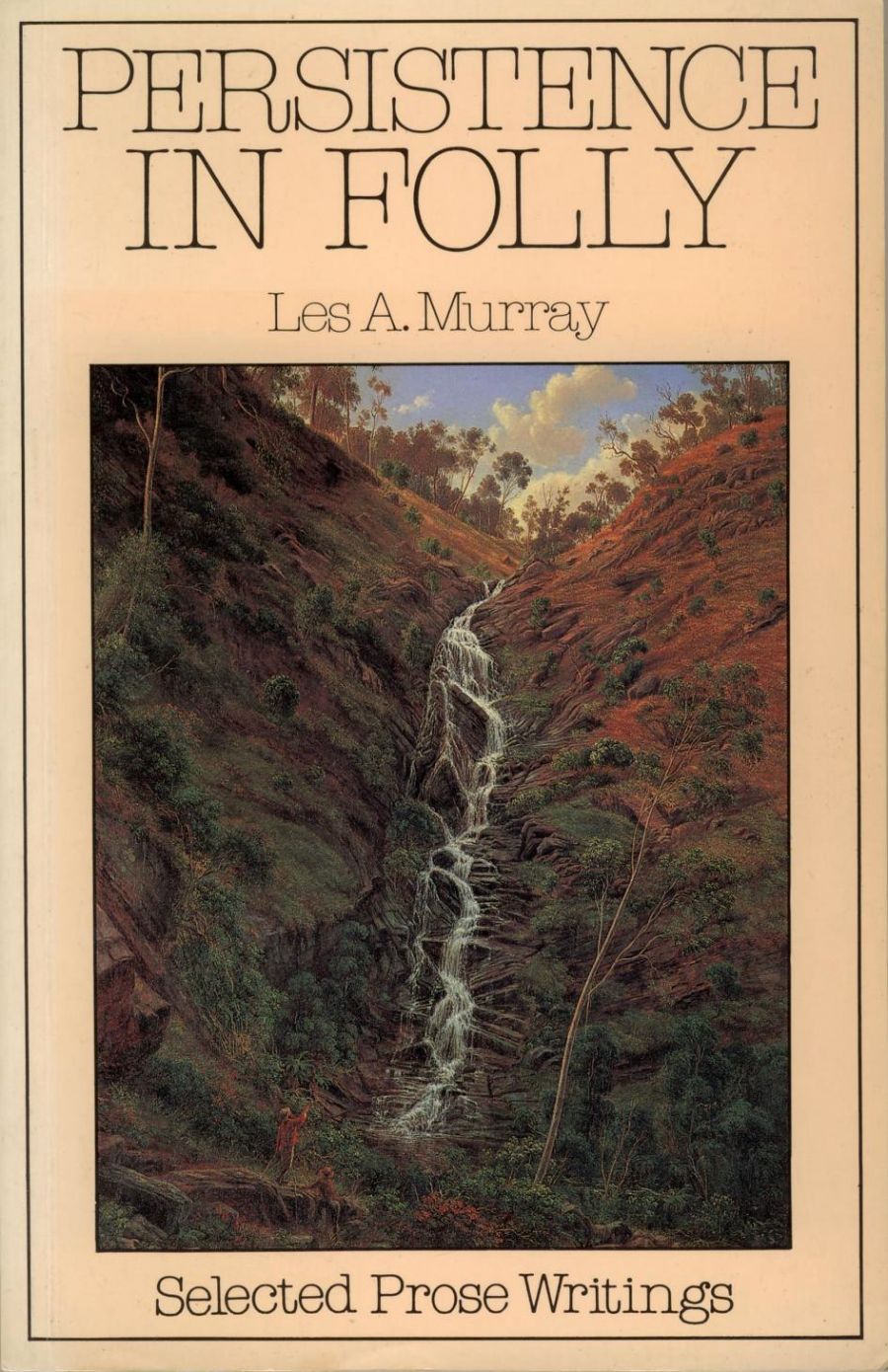
- Free Article: No
- Contents Category: Poetry
- Review Article: Yes
- Online Only: No
- Custom Highlight Text:
The heat of recent controversy in Australia about the meaning and value of multiculturalism in education, in history and in society at large is an indication of the tenacity with which a dominant culture, in this case that of British Australia, clings to its privileges.
- Book 1 Title: Persistence in Folly
- Book 1 Biblio: Angus and Robertson – Sirius Books, 184 pp, $9.95 pb
Such recognition is at the heart of what Les Murray has done in his poetry, which creates its own tradition from a blend of Australian, British, and cosmopolitan traditions. Thus he asserts rural values against urban, vernacular against high culture, republican forms against royal, his native Scottish against establishment English antecedents, and an adopted Catholicism against his family’s Calvinism.
His latest book of essays, Persistence in Folly, deals with these issues directly, particularly in its major essay, ‘The Human Hair Thread’, which can be read as a companion to his poems on the theme of tradition, and again in ‘The Bonnie Disproportion’, but they provide context or content for virtually every essay in the book, which as a whole can be read as the ideological justification for his poetic explorations.
‘The Human Hair Thread’ is the most audacious essay in the volume, for in it he virtually seeks to appropriate the Aboriginal tradition for himself and incorporate it in the rural culture with which he grew up. The kinship which he asserts is based not on genetic inheritance but on a common allegiance to the land which has shaped both cultures. Murray does not sentimentalise the actual relationships between black and white in the district from which he came, but he does claim that the tensions are outweighed by the shared relationship created by land and work (and, incidentally, often deepened by shared if unacknowledged genetic relationships as well).
He is aware of the danger of taking another people’s culture in this way, but defends himself with the claim that artistic borrowing leaves the lender no poorer, and may make him richer by restoring his self confidence in an inheritance which may otherwise be lost by neglect. This is true only insofar as the borrower does not so misuse his borrowings as to make them unavailable to the culture from which they were created. The twin dangers in the use of Aboriginal motifs are that the people will be shorn of their mythic and historic dimensions by being treated just as neighbours, or alternatively be removed from factuality by being turned into creatures of awesome but distant myth. Murray’s writing approaches but succeeds in skating around both of these dangers,
Murray’s use of Aboriginal themes is important, however, not merely because it starts to do justice to the dispossessed, but because it looks to a fact which is common to all Australians but usually concealed by the dominant Anglophile culture. The fact we share is a ruptured relationship with the land. This relationship is incomplete on the side of the newcomers because we have not come to terms with our acts of dispossession, and thus can behave only with the hubris of conquerors instead of with the confidence of those who are owned by the land. It is incomplete for the Aboriginals because their dispossession has not been acknowledged, and thus they cannot be free in their land. The problem of land rights is therefore not merely one of justice, but must be solved before any legitimate Australian culture can come fully into being. Until then, we are not even in the stage of independent cultures, but are moving among separate cultures which can only remain individually incomplete.
There are many other worthwhile themes explored in this valuable collection of Murray’s essays and reviews. ‘The Bonny Dispossession’ carries further the exploration of his own ancestry and the nature of the Scottish contribution to our traditions. We gain insight into the theme and meaning of ‘The Boys Who Stole the Funeral’. But above all, we are entertained by sharing the thoughts of a strong conservative mind developing a view of Australian history and society through a witty and lucid prose that never condescends to the reader.


Comments powered by CComment